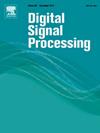An evaluation and study of detail contrast preservation and color consistency in decolorization
IF 3
3区 工程技术
Q2 ENGINEERING, ELECTRICAL & ELECTRONIC
引用次数: 0
Abstract
Grayscale conversion plays a crucial role in image processing, particularly for edge detection and segmentation tasks, where decolorization quality directly impacts subsequent analysis. An ideal decolorization algorithm should be both efficient and robust while preserving color consistency and detail contrast. In this study, we revisit the RTCP (Real-time Contrast-Preserving Decolorization) algorithm and propose three key optimizations: a clustering-guided decolorization approach, a locally adaptive decolorization strategy, and a weight-optimized decolorization method. To enhance solution quality, we implement a constrained particle swarm optimization framework to systematically explore the parameter space. Experimental validation on two standard datasets (Ĉadík and CSDD) demonstrates that our optimized methods handle diverse decolorization scenarios more effectively while maintaining competitive performance against existing approaches. Recognizing the limitations of current evaluation metrics in assessing detail contrast preservation, we introduce the D-C2G-SSIM metric for more accurate quantitative assessment. Comparative results show consistent improvements over the original RTCP algorithm, with the average D-C2G-SSIM score increasing from 0.8331 to 0.8442 on Ĉadík dataset and from 0.8696 to 0.8847 on the CSDD dataset, confirming the effectiveness of our approach.

脱色中细节对比度保存和颜色一致性的评价与研究
灰度转换在图像处理中起着至关重要的作用,特别是对于边缘检测和分割任务,其中脱色质量直接影响后续分析。理想的脱色算法应在保持颜色一致性和细节对比度的同时,既高效又鲁棒。在本研究中,我们回顾了RTCP(实时对比度保持脱色)算法,并提出了三个关键优化:聚类引导脱色方法,局部自适应脱色策略和权重优化脱色方法。为了提高解的质量,我们实现了一个约束粒子群优化框架来系统地探索参数空间。在两个标准数据集(Ĉadík和CSDD)上的实验验证表明,我们优化的方法可以更有效地处理各种脱色场景,同时保持与现有方法的竞争性能。认识到当前评估指标在评估细节对比度保存方面的局限性,我们引入了D-C2G-SSIM指标,以进行更准确的定量评估。对比结果显示,与原始RTCP算法相比,我们的方法有了一致的改进,在Ĉadík数据集上d - c5g - ssim平均得分从0.8331提高到0.8442,在CSDD数据集上从0.8696提高到0.8847,证实了我们的方法的有效性。
本文章由计算机程序翻译,如有差异,请以英文原文为准。
求助全文
约1分钟内获得全文
求助全文
来源期刊

Digital Signal Processing
工程技术-工程:电子与电气
CiteScore
5.30
自引率
17.20%
发文量
435
审稿时长
66 days
期刊介绍:
Digital Signal Processing: A Review Journal is one of the oldest and most established journals in the field of signal processing yet it aims to be the most innovative. The Journal invites top quality research articles at the frontiers of research in all aspects of signal processing. Our objective is to provide a platform for the publication of ground-breaking research in signal processing with both academic and industrial appeal.
The journal has a special emphasis on statistical signal processing methodology such as Bayesian signal processing, and encourages articles on emerging applications of signal processing such as:
• big data• machine learning• internet of things• information security• systems biology and computational biology,• financial time series analysis,• autonomous vehicles,• quantum computing,• neuromorphic engineering,• human-computer interaction and intelligent user interfaces,• environmental signal processing,• geophysical signal processing including seismic signal processing,• chemioinformatics and bioinformatics,• audio, visual and performance arts,• disaster management and prevention,• renewable energy,
 求助内容:
求助内容: 应助结果提醒方式:
应助结果提醒方式:


